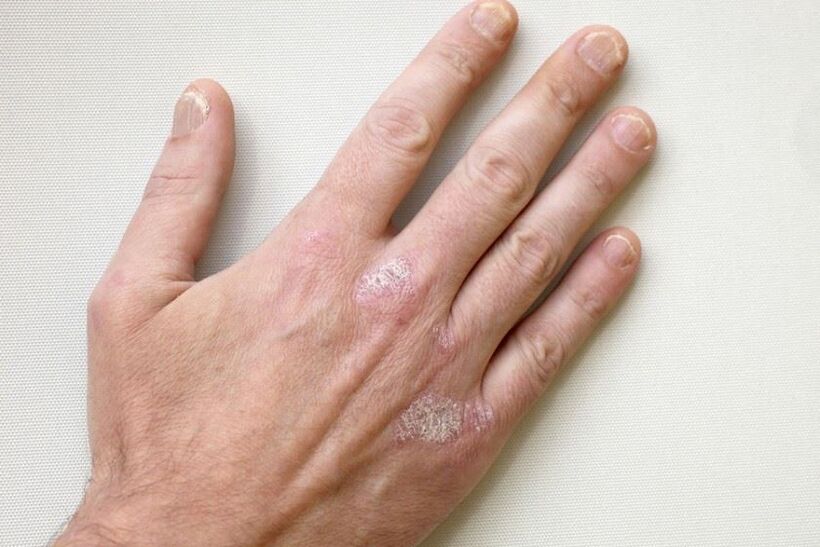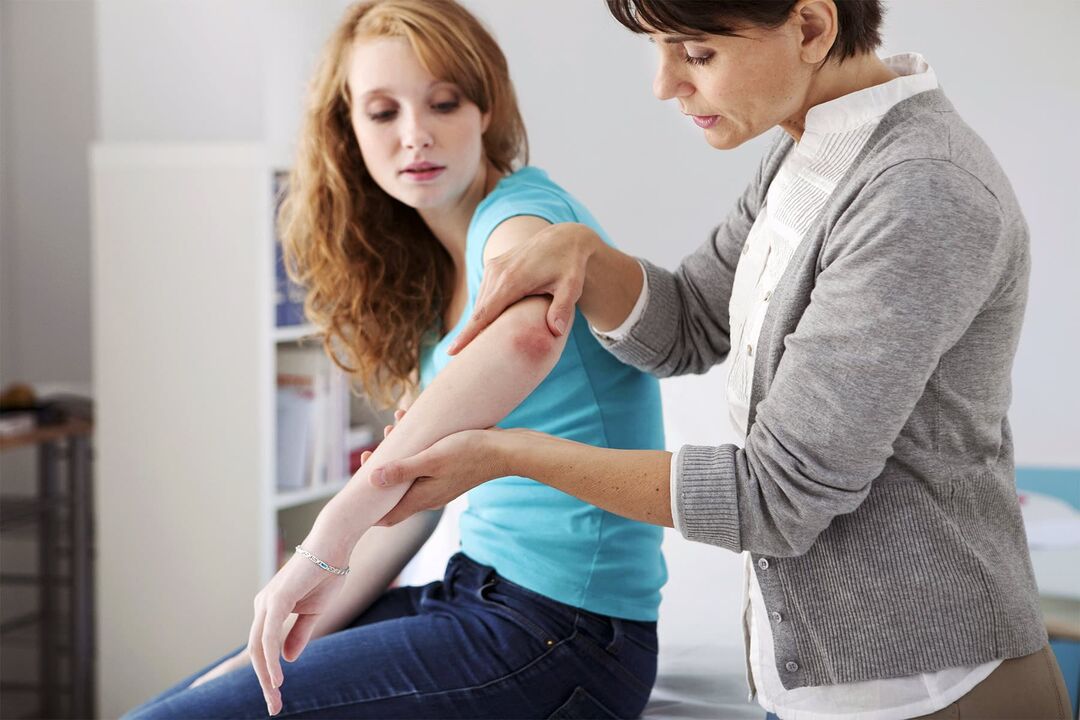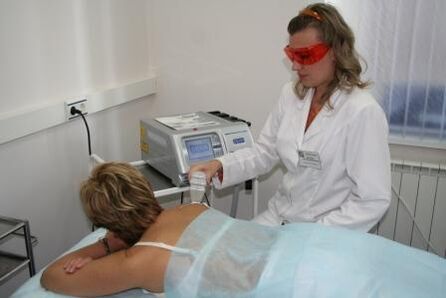Over the past few decades, dermatology has increasingly begun to address cases of psoriatic dermatitis. Statisticians note that most of these cases affect people with fair skin. And although experts have not yet set an age limit for this widespread disease, nevertheless, the most active stages of the disease are recorded precisely at the age of 15 to 45 years. In terms of prevalence, psoriasis can currently affect up to 25 people on the planet, this number overall, according to WHO (World Health Organization) in 2016, is about 4. 2% of the total populationworld.
What type of disease is psoriasis and what are the external signs?
The name of such an ulcer is given by its characteristic external signs - red patches and scaly papules, formed by a rash accompanied by itching and inflammation of the skin. Psoriasis is also known as psoriasis and has a fairly broad classification of types, symptoms, causes of onset, progression and exacerbation of the disease. The general picture of today's pathology does not give the doctor a clear idea about its origin and unambiguous treatment methods. Therefore, the doctor must work with the patient to find a partial cure.
The definition of psoriasis today accepted by all experts is that it is a non-communicable disease, mainly appearing for various reasons and it must be treated carefully, extremely carefully, under supervision. Continuous supervision by a number of specialists, not just dermatologists. The word psoriasis itself means "itch" (from the Greek term "psora"), "scabies" (from the English term, also written "psora"). Diagnosis is done comprehensively, not just with skin tests or blood tests.
More information:The specificity of the disease is not yet fully studied in that the patient must be prepared for persistent, persistent and long-term healing, as well as alternating periodic exacerbations with remissions, periods of remission. decreased, lasting from a few weeks to several weeks. year.
Classification of types of psoriasis

When experts want to accurately determine psoriasis in a patient, what are the rashes on his skin and the unbearable desire to constantly scratch the ulcers, what kind of disease the patient is suffering from, then experts can focus on a particular disease classification. Furthermore, she is not alone, today there are at least four of them, so a brief review to get a general idea.
According to ICD-10
According to the International Classification of Diseases 10th Revision, such dermatitis is divided into the following types:
- Regular or plaque-like. Prevalence – 90-95%. Appearance – scaly structure with gray, white, pink color. As they grow, entire "islands" and "lakes" of diseased skin are formed.
- Systemic pustular disease or "impetigo" disease, "Tsumbusha" disease, exudate. It begins with blisters and the blisters contain fluid (exudate). After rupture, ulceration and self-infection form.
- Persistent or Allopo epidermal disorders, Setton or Crocker epidermal disorders. The formation of fluid or pustules in plaques and papules is sterile and not widely autoinfectious. Nails and fingers are often affected.
- Damage to the palms of the hands and soles of the feet. Small ulcers on the palms and soles of the feet do not become infected on their own. It makes it very difficult for patients to have a quality of life when walking and working with their hands.
- teardrop-shaped. Small purple, pink, gray dots on the body often begin to appear after severe pharyngitis, strep throat, pharyngitis and other viral infectious diseases.
- Joint disease appears. Damage to the joints of the fingers, hands, knees, and legs. Incidence – 10% of all psoriasis patients.
- Other, reversed and unknown. Smooth patches of skin with a low rate of peeling appear on delicate skin areas.
According to this classification, which shows the nature of this or that type, what is the disease, what is psoriasis, the pathology is assigned a special code - L40. Different numbers may be added to this code to indicate a specific disease.
According to clinical parameters
The disease can also be classified according to clinical criteria, expressed as follows:
- by location - designated body parts;
- according to the clinical picture - properties, texture of psoriasis;
- according to the stages of progression - disease progression, stability, regression;
- according to the manifestations in a particular season;
- by skin area - less than 20% of the epidermis is affected, more than 20% or the entire skin.
According to the American classification
The US National Organization, when defining psoriasis, what type of disease it is, and what type it belongs to, has classified it in the following order:
- mild skin damage - less than 2%;
- medium level of spread – from 2 to 10%;
- stage of severe skin damage - from 10% or more.
According to PASI index
Another international approach to identifying ulcers of psoriasis, which is in the arsenal of medical diagnosticians, divides the types of the disease according to the following principle:
- the presence of a PASI index ranging from 0 to 72 values;
- indicator shows the severity of dermatitis;
- Only experts calculate the index.
Doctors can use any of these classifications when determining the type of disease, but practice shows that the ICD-10 system is most actively used. Without an accurate definition of the disease, it will be difficult for doctors to understand what type of disease psoriasis is and how to treat it.

General symptoms
All doctors and research scientists are confident that psoriasis is not a contagious phenomenon and that it cannot be transmitted from a sick person to a healthy person. Characteristic pustular rashes are called papules if their formation is initially swollen with fluid, then bursts, resulting in lesions, drying of crusts and scabs. "Papula" from lat. means "knot". But if the red spot does not drain, the swelling on the skin surface is compressed, then turns into a wound due to constant scratching, festers and forms a scab, then we are talking about plaque.
Note!Psoriasis is a disease where scales form on the surface of the affected skin. "Squama" from lat. means "scaly, " so the diagnosis could be written on the line on the examination sheet: "papulosquamous disorder of the epidermis. "
Symptoms of psoriasis
When defining psoriasis, we focus on its symptoms, which can be represented by the following unified list of manifestations:
- Papules are bumps on the surface of the skin that contain infectious or sterile fluid inside.
- Plaques are red spots that develop and fester over time.
- The patches may be gray, reddish, yellowish, or have purple spots.
- The texture of the affected skin's surface ranges from wet, pustular to dry and scaly.
- Scaling and peeling are characteristic of all diseases.
- The patient's general condition ranges from irritability, nervousness, drowsiness, fatigue and lethargy.
Stages and levels of development of psoriasis
The stages not only show the characteristics of the type of psoriasis and its types, but can also tell the doctor how to deal with the disease. Usually divided into 3 stages.
Weak stage
- papules and plaques are rare and solitary;
- no uncomfortable itchy feeling;
- There has been no serious swelling;
- often appears after stress or severe infection.
Intensive phase
- defined as Koebner syndrome;
- Lesions appear suddenly in different parts of the human body;
- fusion and growth of papules and plaques into entire "paraffin lakes";
- pain and itching are typical during this stage.
Exacerbation of the disease
- scaly form;
- dry skin;
- rash lesions no longer develop;
- scales fall off;
- sore skin;
- the thickness of the skin where the plaque is located increases.
For reference:remission is a distinct phase and is considered the alleviation of the medical condition.
Causes that provoke the appearance of the disease
Despite the fact that there is no answer to the question of what psoriatic dermatitis is, what are the reasons for its appearance, nevertheless, some prerequisites have been proven naturally. can cause the onset of the disease.
Such patterns suggest the following possible reasons:
- Genetic predisposition.
- Weak immune system.
- Recently experienced severe psychological trauma, exposure to infections, viruses.
- Side effects of medications.
- A sharp change in climatic conditions for life.
- Allergy in humans.
- Imbalances in the gastrointestinal, endocrine, excretory, cleansing systems.
- Slow metabolism (metabolism) due to sedentary lifestyle and poor diet, sleep, and wakefulness.
Important!Ulcers can appear even after severe sunburn, constant friction of synthetic clothing fabrics in skin folds on the body. Even consuming too much low-quality food (high in chemicals, preservatives, food synthetics), alcohol, drugs (toxic substances) or tobacco can affect depression. more important. All this was recorded by the method of elimination - for example, when the patient limits bad habits, his condition improves.

Diagnosis of psoriasis - what is it?
If people ask about psoriasis, what it is and which doctor they should contact, and have discovered similar symptoms in themselves or relatives or friends, they should first contact their doctor. Dermatology. An examination will then be scheduled, which may involve several other highly specialized professionals:
- histologist - studies blood cells in this case;
- immunologist - determines the cause of the body's weakened resistance to viruses;
- endocrinologist - if there is a suspicion of disruption in hormone levels and the activity of the endocrine system;
- infectious disease specialist – detects the presence of infection or virus in the human body;
- Nutritionists will determine appropriate nutrition for patients and other professionals.
Diagnosis is carried out using the following mechanisms and techniques:
- Examine the affected areas of the skin.
- Blood tests will show whether the joints are affected by the disease.
- A biopsy shows the stage and confirms (diagnoses a specific disease).
When determining the specific type of psoriasis, the Internet cannot be of any help. Moreover, encyclopedic reference books are often filled in by any Internet user, both those knowledgeable about the peculiarities of the disease and non-specialists.
Note!A biopsy is one of the main diagnostic procedures in which a portion of the affected skin is removed for examination in a laboratory. Its results show the degree of increase in T lymphocytes, which cells are strong and which cells are weak.
Difficulties in the life of psoriasis patients
When a patient first encounters psoriasis and does not know what disease he has, he tends to experience the following conditions that accompany the inflammatory process of the skin:
- depression;
- inferiority complex;
- difficulties in the social sphere - people, due to ignorance, often believe that the disease is contagious and stop communicating with sick people;
- cardiovascular disorders - sometimes even heart attack;
- pressure imbalance – increased blood pressure;
- diabetes – type 2 is especially common;
- you must limit your eating and drinking;
- you need to adapt to an active lifestyle, which is extremely difficult to do when you are depressed;
- physical discomfort - difficulty getting dressed, showering, bathing, moving arms, legs, sleeping, etc. v.
In the same way, all this affects patients who are not encountering this disease for the first time, but they are mentally ready to face it and work hard to reduce its intensity. its degree.
For reference:Remission (deterioration phase of the disease) can last for several years only with the right therapeutic approach and the appointment of courses, methods, and methods of treatment.

Psoriasis treatment methods
When the doctors themselves do not fully know the reasons for exacerbation of the disease and how to eliminate all this forever, this also greatly affects the patient's own mood. But you just need to convince yourself that if the disease cannot be cured, you can improve your quality of life in a few years. Therefore, psoriasis is cured only by an integrated approach of all the practices, methods and methods available in nature. Even doctors do not despise folk remedies, the patient just needs to discuss this or that method with the doctor in advance.
Traditional method
As soon as they determine the type of dermatitis - psoriasis is also dermatitis, what kind of disease it is, its type, doctors immediately begin specific procedures that are supposed to eventually bringpositive effect.
Treatment begins with the following procedures:
- The affected areas are disinfected to prevent self-infection.
- It is imperative to reduce inflammatory processes with medications.
- Plaques need to be addressed and special medications are prescribed for this.
- The same applies to the scales - so that they do not fall off painfully, they are softened with lotions, smeared with various ointments, tinctures, emollient mixtures.
- Injections and tablets are prescribed - for example, immunosuppressants, which help restore the function of the immune system along with improving the psychophysical condition.
- They use irradiation with ultraviolet rays, blood purification by plasmapheresis and other methods.
- Mud and salt water resort treatments. For example, Israeli resorts on the Dead Sea. This method is not cheap, it takes 28 days but is 100% effective.
- Salt bath and herbal bath.
- Special diet and exercise.
In addition to the above methods, manipulations are also performed on the valves of the small intestine, which are responsible for cleaning the system. Usually, after such surgeries, patients will feel better than before about 5-6 years.
Important!The basic drug will always be an antimetabolite belonging to the group with a similar structure to folic acid, supplied to the body by intramuscular injection.
Folk remedies to treat psoriasis
The disease can also be treated with traditional methods because some plants, seeds, and fruits have their own medicinal properties. This is an economical option for those who cannot take advantage of a trip to the resort. At home, you can prepare your own baths, making various ointments using Kalanchoe, honey and other compounds. Only patients should always consult their doctor first. Here you also have to follow a strict diet, sleep, work and physical activity regimen.
Additional measures
Any treating doctor will always prohibit the patient from being in the sun for more than 6 hours per day in 2 sunbathing sessions. At the same time, the sun should not peak and burn strongly, otherwise you can only cause burns and aggravate the condition. In addition to sun exposure, psoriasis can also be temporarily cured with special dietary supplements. The most popular system today is the Pegano diet. In addition, you should get rid of all the usual whims, such as cigarettes, alcohol, countless sweets and other hobbies.
More information:Do not diet suddenly. In addition, you must always remember your intestines, which need support thanks to the presence of fiber and sunflower oil. So, you can eat sunflower seeds and add many allowed high-fiber foods to your meals.
5 preventive measures for people susceptible to psoriasis
So that a person has no questions about psoriasis - what kind of disease it is and how to treat it, one should also listen to some recommendations from experts on how to protect themselves from such a disease as much as possible. Good. Pay attention to this list of 5 basic recommendations, even if you are not predisposed to this type of disease:
- Protect yourself from various infections, dress warmly, do not catch colds, create the most positive attitude in life.
- Actively exercise, maintain a normal diet and sleep.
- Give up all bad habits or hobbies such as baking and eating sweets that contain a lot of sugar.
- Wear clothes made mainly from natural fibers.
- All pain relievers or other medications should be taken in consultation with a physician and should not be self-medicated.
For reference:A slow metabolism leads not only to psoriasis but also to obesity, liver disease, kidney disease, heart disease and other dysfunctions. Therefore, reducing the amount of carbohydrates in the menu, walking more in the fresh air and exercising will help anyone stay healthy!
There is currently no complete cure for this disease; Experts are determining the cause as several cases of the psoriasis disorder are reported. The therapeutic procedure is long, lengthy and difficult. Patients not only need to change their lifestyle but also self-observe along with keeping a diary to record all their conditions. Therefore, any delay in contacting a doctor will only aggravate the situation. Patients should not torment themselves like that, be afraid to show themselves to the doctor, it is better to immediately start finding a solution to the problem than to build it up like a snowball.

























